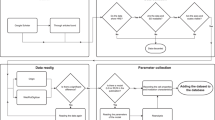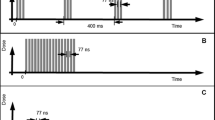Abstract
Low energy x-rays (Eph ≤50 keV) are widely used in diagnostic radiology and radiotherapy. However, data on their relative biological effectiveness (RBE) are scarce. Of particular importance for risk estimation are the RBE values of x-rays in the range which is commonly used in mammography (10–30 keV). We have determined clonogenic survival after low-energy x-ray irradiation for three cell lines: primary human epidermal keratinocytes (HEKn), mouse fibroblasts (NIH/3T3) and Chinese hamster fibroblasts (V79). Experiments were performed with a 25 kV x-ray tube and compared to 200 kV x-rays as a reference. Compared to the effect of 200 kV x-rays, irradiation with 25 kV x-rays resulted in a decreased survival rate in the murine fibroblasts, but not in the human epithelial cell line. The RBE value was calculated for 10% surviving fraction. For HEKn cells, RBE was 1.33±0.27, for NIH/3T3 cells 1.25±0.07 and for V79 cells 1.10±0.09, respectively. No consistently increased RBE was observed in the various cell lines. Nevertheless, a potential of increased cytogenetic changes has to be considered for risk estimation of low-energy x-rays.



Similar content being viewed by others
References
ICRP (1991) Publication 60. The 1990 recommendations of the International Commission on Radiological Protection. Annals of the ICRP 21(1–3). Pergamon Press, Oxford
Michalik V, Frankenberg D (1996) Two types of double-strand breaks in electron and photon tracks and their relation to exchange-type chromosome aberrations. Radiat Environ Biophys 35:163–169
Kellerer AM (2002) Electron spectra and the RBE of X rays. Radiat Res 158:13–22
Spadinger I, Palcic B (1992) The relative biological effectiveness of 60Co γ-rays, 55 kVp X-rays, 250 kVp X-rays, and 11 MeV electrons at low doses. Int J Radiat Biol 61:345–353
Bistrović M, Bišćan M, Viculin T (1986) RBE of 20 kV X-rays determined for survival of V 79 cells. Radiother Oncol 7:175–180
Hoshi M, Antoku S, Nakamura N, Russel WJ, Miller RC, Sawada S, Mizuno M, Nishio S (1988) Soft X-ray dosimetry and RBE for survival of Chinese hamster V79 cells. Int J Radiat Biol 54:577–591
Brenner DJ, Sawant SG, Hande MP, Miller RC, Elliston CD, Fu Z, Randers-Pehrson G, Marino SA (2002) Routine screening mammography: how important is the radiation-risk side of the benefit-risk equation? Int J Radiat Biol 78:1065–1067
Schmid E, Regulla D, Kramer H-M, Harder D (2002) The effect of 29 kV X rays on the dose response of chromosome aberrations in human lymphocytes. Radiat Res 158:771–777
Sasaki MS, Kobayashi K, Hieda K, Yamada T, Ejima Y, Maezawa H, Furusawa Y, Ito T, Okada S (1989) Induction of chromosome aberrations in human lymphocytes by monochromatic X-rays of quantum energy between 4.8 and 14.6 keV. Int J Radiat Biol 56:975–988
Frankenberg-Schwager M, Garg I, Frankenberg D, Greve B, Severin E, Uthe D, Göhde W (2002) Mutagenicity of low-filtered 30 kVp X-rays, mammography X-rays and conventional X-rays in cultured mammalian cells. Int J Radiat Biol 78:781–789
Frankenberg D, Kelnhofer K, Bär K, Frankenberg-Schwager M (2002) Enhanced neoplastic transformation by mammography X rays relative to 200 kVp X rays: indication for a strong dependence on photon energy of the RBEM for various endpoints. Radiat Res 157:99–105
Słonina D, Hoinkis C, Dörr W (2001) Effect of keratinocyte growth factor on radiation survival and colony size of human epidermal keratinocytes in vitro. Radiat Res 156:761–766
Puck TT, Marcus PI (1956) Action of X-rays on mammalian cells. J Exp Med 103:653–666
Boone JM, Seibert JA (1997) An accurate method for computer-generating tungsten anode x-ray spectra from 30 to 140 kV. Med Phys 24:1661–1670
NIST Physical Reference data, http://physics.nist.gov//PhysRefData/
Słonina D, Spekl K, Panteleeva A, Brankovic K, Hoinkis C, Dörr W (2003) Induction of micronuclei in human fibroblasts and keratinocytes by 25 kV x-rays. Radiat Environ Biophys 42:55–61
O'Driscoll MC, Scott D, Orton CJ, Kiltie AE, Davidson SE, Hunter RD, West CML (1998) Radiation-induced micronuclei in human fibroblasts in relation to clonogenic radiosensitivity. Br J Cancer 78:1559–1563
Acknowledgements
This study was supported in part by Sächsisches Staatsministerium für Wissenschaft und Kunst, grants number 4–7531.50–04–0370–99/14 and –00/.1. The study was associated with a project supported by the Deutsche Forschungsgemeinschaft, grant number Do429/4–1.
Author information
Authors and Affiliations
Corresponding author
Rights and permissions
About this article
Cite this article
Panteleeva, A., Słonina, D., Brankovic, K. et al. Clonogenic survival of human keratinocytes and rodent fibroblasts after irradiation with 25 kV x-rays. Radiat Environ Biophys 42, 95–100 (2003). https://doi.org/10.1007/s00411-003-0199-2
Received:
Accepted:
Published:
Issue Date:
DOI: https://doi.org/10.1007/s00411-003-0199-2




